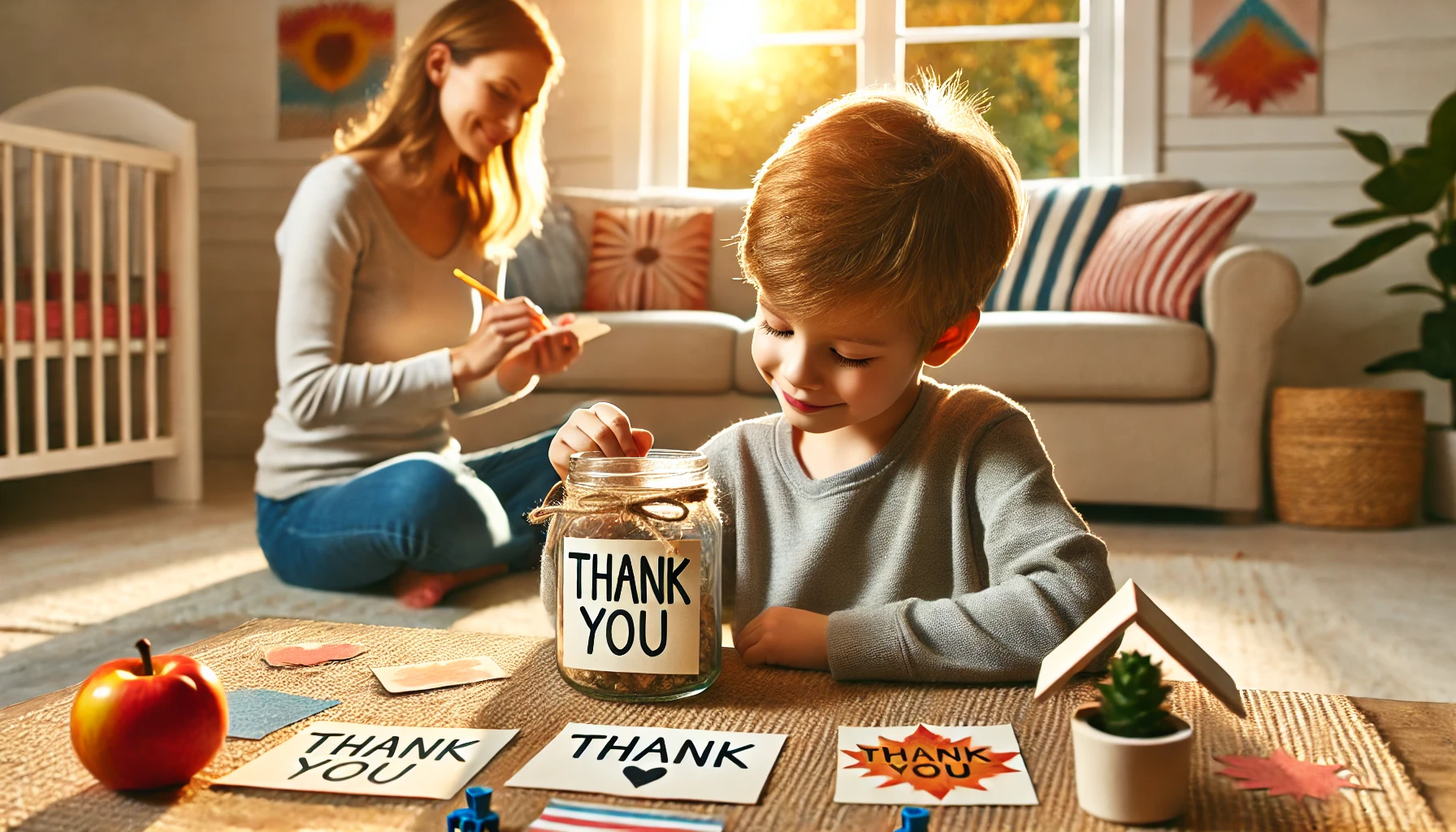How to Teach Young Children About Gratitude in Everyday Life
Gratitude is a powerful value that helps children appreciate what they have, develop kindness, and build strong relationships. Teaching young children about gratitude fosters a positive mindset, reduces entitlement, and encourages them to recognize the efforts of others. Parents can nurture gratitude through daily conversations, role-modeling, and engaging activities. In this article, we’ll explore practical ways to help children practice gratitude in their everyday lives.
Why Teaching Gratitude is Important
- Encourages appreciation – Helps children recognize and value what they have.
- Builds empathy and kindness – Teaches kids to acknowledge others’ efforts.
- Promotes a positive mindset – Helps children focus on the good in their lives.
- Strengthens relationships – Encourages thankfulness in interactions with family and friends.
- Develops lifelong happiness habits – Teaches children to find joy in everyday moments.
1. Model Gratitude in Everyday Life
Children learn gratitude by watching how adults express appreciation.
Activity Idea:
- Say “thank you” often, even for small things.
- Express appreciation: “I’m so grateful for this delicious meal we made together!”
- Talk about things you are thankful for daily.
What Kids Learn:
- How to recognize and express appreciation
- The importance of valuing what they have
- Positive ways to interact with others
2. Start a Daily Gratitude Ritual
Making gratitude a habit helps children develop a thankful mindset.
Activity Idea:
- During meals or bedtime, ask, “What was the best part of your day?”
- Keep a gratitude jar where kids write or draw things they are thankful for.
- Use a gratitude calendar where children list something they appreciate each day.
What Kids Learn:
- Reflecting on positive moments
- Finding joy in everyday life
- Making gratitude a routine practice
3. Teach the Value of Saying “Thank You”
Verbalizing appreciation reinforces the habit of gratitude.
Activity Idea:
- Encourage children to say “thank you” when receiving gifts or help.
- Role-play situations where expressing gratitude is appropriate.
- Write simple thank-you notes or drawings for family and friends.
What Kids Learn:
- The importance of acknowledging kindness
- How words can make others feel appreciated
- The habit of expressing gratitude naturally
4. Read Books About Gratitude
Stories help children understand gratitude through relatable characters.
Activity Idea:
- Choose books that highlight thankfulness and appreciation.
- Pause while reading and ask, “How do you think the character felt when they received kindness?”
- Encourage children to share times when they felt grateful.
What Kids Learn:
- How gratitude makes people feel happy
- The impact of appreciation in relationships
- Ways to express thankfulness in real life
5. Encourage Acts of Kindness
Helping others fosters a sense of gratitude and generosity.
Activity Idea:
- Donate toys, clothes, or food to those in need.
- Encourage children to help a friend or family member with a small task.
- Create a kindness challenge where they do something thoughtful each day.
What Kids Learn:
- The joy of giving and helping others
- How gratitude connects to kindness
- Empathy and appreciation for what they have
6. Show Gratitude for Nature and the World Around Them
Helping children appreciate the environment fosters mindfulness and awareness.
Activity Idea:
- Go on a nature walk and talk about the beauty of trees, animals, and the sky.
- Encourage children to care for plants and animals as an act of appreciation.
- Have a “gratitude for nature” day where kids draw or write about their favorite outdoor experiences.
What Kids Learn:
- Appreciation for the world around them
- Respect for nature and the environment
- How to find gratitude in simple things
7. Celebrate Effort and Hard Work
Teaching children to appreciate effort helps them value achievements and persistence.
Activity Idea:
- Praise effort, not just results: “I love how hard you worked on this puzzle!”
- Recognize others’ contributions, like thanking a sibling for helping clean up.
- Encourage children to say thank you to teachers, coaches, or caregivers.
What Kids Learn:
- Gratitude for hard work and dedication
- The importance of recognizing others’ efforts
- Appreciation for teamwork and cooperation
8. Be Patient and Consistent
Gratitude takes time to develop, so gentle reminders and encouragement are key.
Activity Idea:
- If children forget to say “thank you,” gently remind them: “How do we show appreciation?”
- Reinforce gratitude daily with small reminders and discussions.
- Celebrate progress by acknowledging when they show gratitude on their own.
What Kids Learn:
- That gratitude is a lifelong skill
- How to naturally express appreciation
- The emotional benefits of being thankful
Final Thoughts
Teaching young children about gratitude helps them develop kindness, appreciation, and a positive outlook on life. By modeling gratitude, encouraging daily reflection, and fostering acts of kindness, parents can create an environment where thankfulness becomes a natural and joyful habit.
